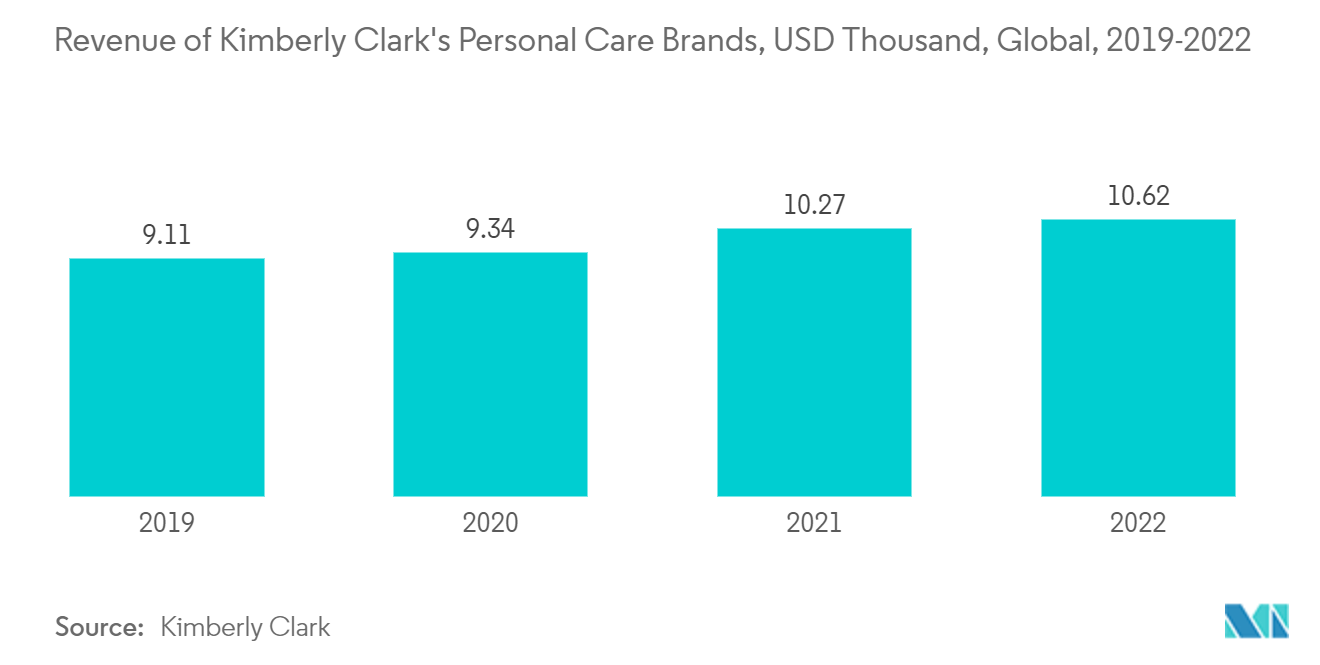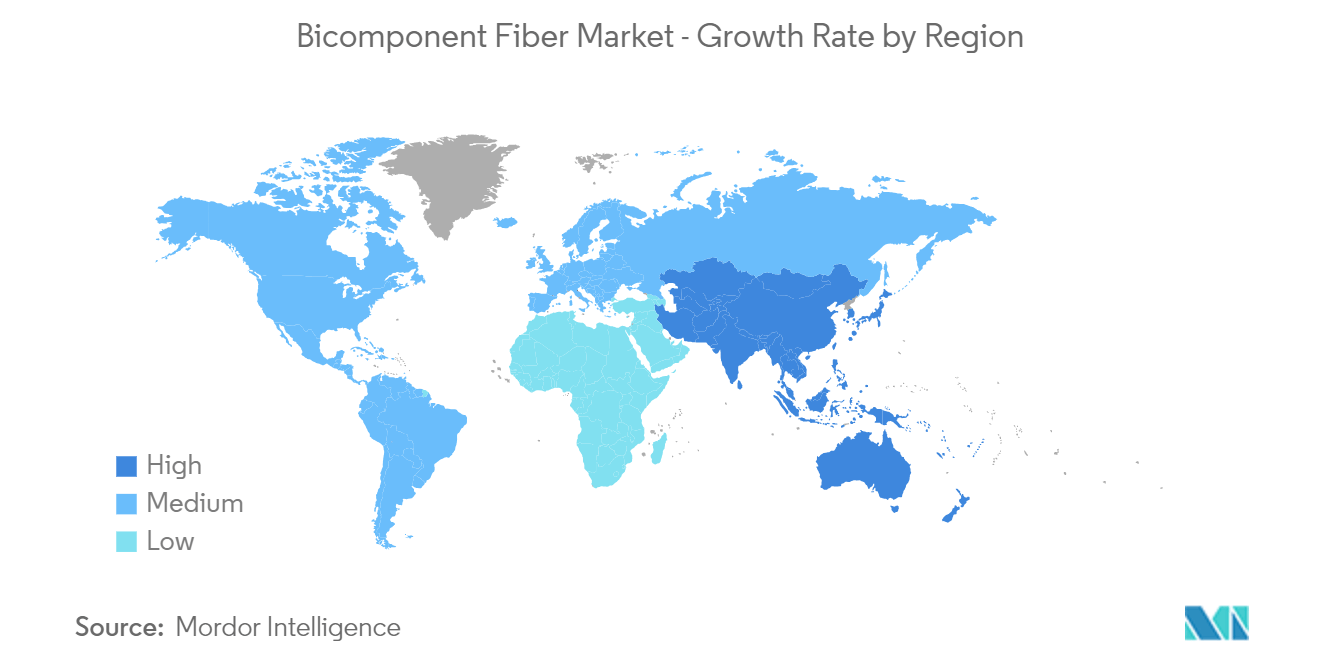Market Trends of Bicomponent Fiber Industry
Hygiene Industry to Dominate the Market
- Bicomponent fibers are utilized to produce nonwoven fabrics with a soft touch, along with other unique physical and aesthetic properties, which are deemed essential for diapers and hygiene products.
- These fibers are also used due to their versatile properties of being clean, recyclable, and have a uniform distribution of adhesive. These fiber nonwovens are the material of choice for products such as toddler training pants, infant diapers, feminine care products, adult incontinence products, medical underpads, wound care, and absorbent bandages, among others.
- Furthermore, owing to the increasing awareness about infant hygiene, parents are strongly adopting the usage of baby diapers and baby wipes. Diapers are among the essential infant daily care products, and baby wipes help prevent bacterial infection and provide comfort.
- According to the Parenting Mode company, the global disposable diaper market accounted for approximately USD 71 billion/year by 2022. Babies use about 6,000 diapers during their first two years of life. In addition, the personal care brands of Kimberly Clark, which include baby hygiene products, generated a revenue of USD 10.62 thousand in 2022 as compared to USD 10.27 Thousand in 2021.
- In April 2023, Millie Moon baby diapers announced their launch in Canada. Millie Moon claims to be a clean, luxury diaper brand offering high-performance and beautifully crafted diapers and sensitive wipes at affordable prices. The company also claims that the materials in its Luxury Diapers are extremely soft on babies' skin and engineered with CloudTouch Softness for optimum comfort.
- In March 2022, as part of its expansion plans in Nigeria, Kimberly-Clark opened a new manufacturing facility in Ikorodu, Lagos, which will manufacture Huggies baby diapers as well as Kotex feminine care products. With the investment of USD 100 million in its new state-of-the-art manufacturing facility, the company is equipped with the latest technology to serve its customers better.
- According to EDANA, in 2022, hygiene and personal care wipes accounted for more than 45% of all nonwoven use across Europe.
- Therefore, considering the growth trends and various projects of hygiene products in different regions worldwide, the hygiene industry is likely to dominate the market, which, in turn, is expected to enhance the demand for bicomponent fiber during the forecast period.

Asia-Pacific to Dominate the Market
- The Asia-Pacific region dominated the bicomponent fiber market in 2022, with a considerable volume and revenue share, and is expected to maintain its dominance during the forecast period.
- In the global textile and clothing market segment, China has always been a major player for the last two decades. Since becoming a member of the World Trade Organization, China's textile and clothing manufacturing and sales have increased dramatically, largely due to increased business from the West.
- According to the China Nonwovens and Industrial Textiles Association, the output of nonwovens in China was 8.14 million tons Y-o-Y in 2022. In addition, China continues to be an attractive market for selling athletic apparel, accessories, and footwear.
- The rising production of automobiles in China is likely to enhance the consumption of automotive textiles, which is expected to further support the demand for the studied market. According to the China Association of Automobile Manufacturers (CAAM), China produced 27,021 thousand units of automobiles in 2022, registering a growth rate of 3.4% compared to the previous year. Out of the automobile production in 2022, passenger cars accounted for 23,836 thousand units, whereas commercial car production accounted for 3,185 thousand units.
- Bicomponent fiber is used for insulation and flooring underlayment in the construction industry. The construction sector is key to China's continued economic development. China is amid a construction mega-boom. According to the National Bureau of Statistics of China, The value of construction output accounted for 31.2 trillion yuan (USD 4.5 trillion) in 2022, up from 29.3 trillion yuan (USD 4.2 trillion) in 2021, China is expected to spend nearly USD 13 trillion on buildings by 2030, creating a positive outlook for the studied market.
- Several diaper manufacturing companies in India are focusing on product innovation and expansion, which is further likely to drive the demand for bicomponent fibers. For instance, in January 2023, Kimberly-Clark announced the relaunch of its iconic diaper brand, Huggies, with the new ‘Huggies Complete Comfort’ range in India.
- In 2023, Reliance Retail's Performax activewear became the official kit sponsor for the Indian football team. The homegrown sportswear brand will have the exclusive rights to manufacture kits across all formats of the game. The firm will also be the sole supplier for all matches, travel, and training wear for the AIFF (All India Football Federation), including men's, women’s, and youth teams. In addition to this, as the merchandise sponsor, Performax is also expected to hold the rights to manufacture and retail these products.
- Hence, the reasons mentioned above are likely to fuel the growth of the bicomponent fiber market in Asia-Pacific over the forecast period.


